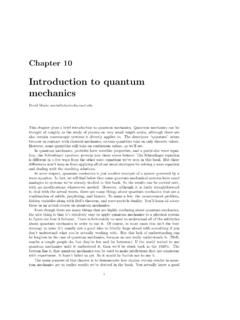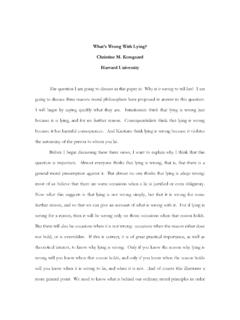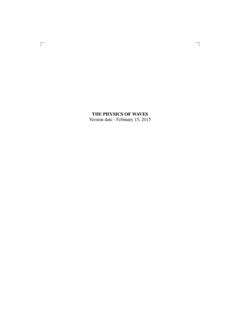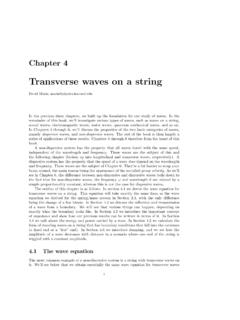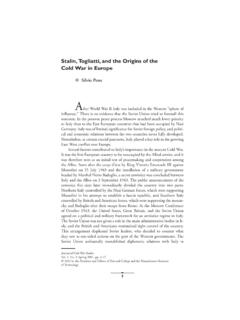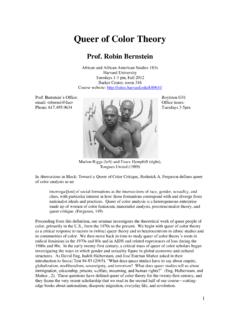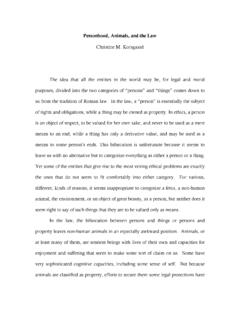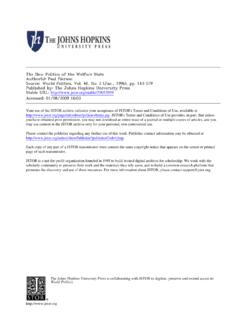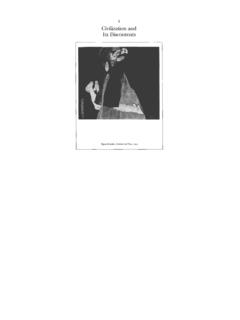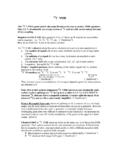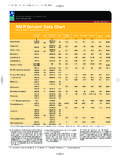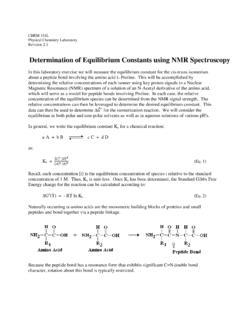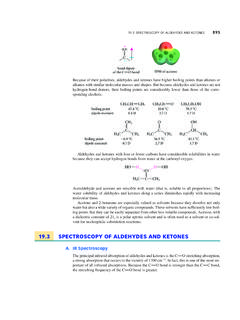Transcription of Lecture 3: Coupling Constants Chem 117 - Harvard University
1 Chem 117E. KwanLecture 3: Coupling ConstantsJanuary 31, ConstantsScope of LectureEugene E. Kwanenergy diagramsfor J couplingthe chemicalshiftHelpful References chemical Fermicontactmodelfirst- vs. second-order spectraHoye's methodwhat aretypicalcouplings?problemsolving1. Nuclear Magnetic Resonance Lambert, ; Mazzola, Prentice-Hall, 2004. (Chapter 3)2. The ABCs of FT-NMR Roberts, University Science Books, 2000. (Chapter 10)3. Spectrometric Identification of Organic Compounds (7th ed.) Silverstein, ; Webster, ; Kiemle, Wiley, 2005.
2 (useful charts in the appendices of chapters 2-4)4. Organic Structural Spectroscopy Lambert, ; Shurvell, ; Lightner, ; Cooks, Prentice-Hall, Organic Structure Analysis Crews, P. Rodriguez, J.; Jaspars, M. Oxford University Press, thank Professor Mazzola (Maryland/FDA) and ProfessorReich (Wisconsin-Madison) for providing useful thank Professor Reynolds (Toronto) for useful Questionsenergy A - J/2 B - J/2 A + J/2 B + J/2 A BJJspectrum:(1) What are Coupling Constants ?(2) How big are they?HHJortho = + HzHH+10 (3) How can they be extracted from first-order multiplets?
3 123456789101112131415165 Hz10 Hz15 Hzvirtual Aspectrum Shift (ppm)Chem 117E. KwanLecture 3: Coupling ConstantsReview: What's a Coupling constant ?Q: Which one of these spectra corresponds to that of ethanol?Of course, the answer is spectrum B, because spectrum Adoesn't have any proton-proton couplings in it. Now, take aclose look at the bottom of the methyl peak:Q: What are these tiny peaks off to either side?These are the carbon-13 satellites. Recall that:- carbon-13: I=1/2 (natural abundance, )- carbon-12: I=0 (natural abundance, )So what we're seeing is a mixture of two isotopomers (for thesake of simplicity, let's assume that protium is 100%abundant, and we can ignore deuterium, tritium, etc.)
4 :~99% 1H - 12C and~1% 1H - have bolded the protons, since those are the nuclei whosemagnetic resonance frequency we are observing. Carbon-12has no magnetic moment, so there is no Coupling to it. Carbon-13 has I=1/2, so there is a doublet which is centered at thefrequency of the 1H-12C peak, but is separated by 1 JCH.(Isotopic substitutions usually only have very small effects onchemical shifts.)Q: That's all great, but what exactly do Coupling constantsactually correspond to in terms of energy levels and spinstates?
5 A: It's very complicated, and I defer a more rigorousdiscussion till later in the course. For now, take note of thishand-waving treatment of why line intensities obey Pascal'striangle for I=1/2 nuclei: Scenario 1: proton A is adjacent (vicinal) to a proton consider the spin states of proton B. It's trivial here:proton B:There are only two states and only one way to arrange eachone, so proton A looks like a this is the simplest case, there's a lot going on here:(1) Only single-quantum transitions are observable.
6 That means that the only transitions which flip one of the spins are allowed. A "double-quantum transition" from to does not result in an observable signal. (This is the weirdness of quantum-mechanical selection rules.)(2) Protons A and B are not interacting, so flipping A gives a transition of frequency A and flipping B gives a transition of frequency of B. From the diagram, A is smaller than B, so proton A has a smaller chemical shift than proton B.(3) Although there are four single-quantum transitions, each is doubly-degenerate and there will be two singlets of equal intensity (assuming we don't have to worry about other spins in the molecule).
7 Q: What is the diagram if there is a Coupling J?Chem 117E. KwanLecture 3: Coupling ConstantsScenario 2: proton A is adjacent (vicinal) to two protons, Band C, but B and C have the same chemical , we get a triplet: The double intensity for the middle line comes from the fact thatthere are two permutations. For a quartet: To me, this is not a very satisfactory description. For one thing,why don't protons which have the same chemical shift split eachother? Why does the chemical shift difference between proton Aand its neighbors matter at all?
8 I won't answer these questions now, but here is how to startthinking about it. Consider the energy diagram for the firstscenario, where we have protons A and B. But let's set thecoupling J to 0, so that A and B don't interact. What's the energylevel diagram for this system?Remember, and are short-hand notations for nuclei whichare in the +1/2 and -1/2 states, respectively. By convention,the state is more stable than the state. If I write , thenit's understood that I mean that proton A is in the state, andproton B is in the state:energy A Bspectrum: A A B BHere, we must consider the weakly-coupled or first-order case,where J << | A - B|.
9 Additionally, A and B must be chemicallyand magnetically non-equivalent (but I'll tell you more about itin a moment). The new diagram is (thin solid lines are the newenergy levels, bold lines are the old energy levels):energy A - J/2 B - J/2 A + J/2 B + J/2 A BJJspectrum:every level moves up or downby J/4 to produce two doubletsEvery level is shifted by J/4; every transition is shifted by 117E. KwanLecture 3: Coupling ConstantsStrange stuff happens if we try to construct the same twodiagrams for the case where A = B.
10 You might think thediagrams should be:energy - J/2J=0J>0 - J/2 + J/2 However, this would lead to a rather strange spectrum wherethe two protons couple to each other, even when they have thesame chemical shift. But why are these diagrams incorrect?The spins are indistinguishable, but this description allows me topoint to a particular nucleus and tell you what spin it is. Instead:energy 12 symmetric 12 antisymmetric If we exchange the nuclei in the symmetric combination, thewavefunction does not change sign.

